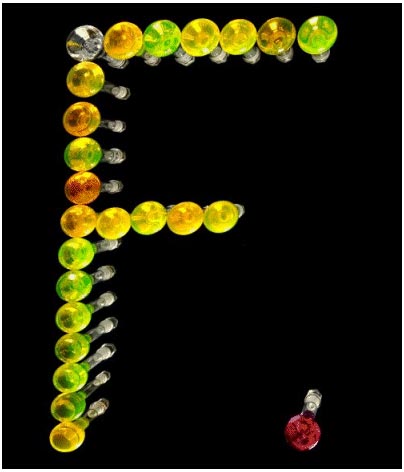Home > Press > F is for Fluoresence and Fluorine
 |
Abstract:
New dyes for optical nanoscopy
F is for Fluoresence and Fluorine
Weinheim, Germany | Posted on March 26th, 2010The imaging of living cells at the molecular level was barely a dream twenty years ago. Today, however, this dream is close to becoming reality. In the Max Planck Institute for NanoBiophotonics in Göttingen, Stefan Hell (2009 recipient of the Otto Hahn Prize) has developed fluorescence microscopy methods for observing objects on the nanoscale and with his colleagues Vladimir Belov and Christian Eggeling a new series of photostable dyes that can be used as fluorescent markers has been realised, as reported in a cover story in Chemistry—A European Journal.
Over the last two decades Stefan Hell and his group have revolutionized the art of microscopy beyond limits thought to have been unbreakable. Due to the wave properties (diffraction) of light, the resolution of an optical microscope is limited to object details of about 0.2 micrometers. The laws of physics appeared to prohibit imaging details beyond this limit. Stefan Hell saw beyond this limitation and about fifteen years ago his vision became concrete; he developed a method for observing objects at the nanometer scale by sequentially turning the fluorescence of nearby molecules off by stimulated emission, a technique known as STED nanoscopy.
The sensitivity of this technique depends on the brightness of the applied fluorescence markers and their photostability is also of great importance. The NanoBiophotonics group has succeeded in synthesizing a series of highly photostable and highly fluorescent dyes. These compounds emit green and orange light and are based on fluorine derivatives of the well-known Rhodamine dye. The use of these dyes in STED nanoscopy leads to images of high-quality with respect to brightness and signal-to-background ratio; further the resolution over that of more traditional optical microscopes is significantly improved giving more detailed structural information.
These rhodamine-based fluorine derivatives are even more special because of their versatility. The compounds are available in hydrophilic and lipophilic forms, and with the inclusion of amino reactive groups, they can be easily attached to antibodies or other biomolecules in the course of standard labeling and immunostaining procedures. The group demonstrate that these new dyes are able to cross cellular membranes and reach the interior of living cells, which could lead to new labeling strategies for biological systems. All eyes are now on Göttingen to see just how far optical nanoscopy can go.
Author: Stefan Hell, Max Planck Institute of NanoBiophotonics, Göttingen (Germany), www.mpibpc.mpg.de/groups/hell/
Title: New Fluorinated Rhodamines for Optical Microscopy and Nanoscopy
Chemistry - A European Journal 2010, 16, No. 15, 4477-4488, Permalink to the article: dx.doi.org/10.1002/chem.200903272
####
About Wiley InterScience
Wiley InterScience (www.interscience.wiley.com) provides access to over 3 million articles across nearly 1500 journals and 7000 Online Books and major reference works. It also holds industry leading databases such as The Cochrane Library, chemistry databases and the acclaimed Current Protocols laboratory manuals.
For more information, please click here
Contacts:
Editorial office
Amy Molnar (US)
Jennifer Beal (UK)
Alina Boey (Asia)
Copyright © Wiley InterScience
If you have a comment, please Contact us.Issuers of news releases, not 7th Wave, Inc. or Nanotechnology Now, are solely responsible for the accuracy of the content.
| Related News Press |
News and information
![]() Simulating magnetization in a Heisenberg quantum spin chain April 5th, 2024
Simulating magnetization in a Heisenberg quantum spin chain April 5th, 2024
![]() NRL charters Navy’s quantum inertial navigation path to reduce drift April 5th, 2024
NRL charters Navy’s quantum inertial navigation path to reduce drift April 5th, 2024
![]() Discovery points path to flash-like memory for storing qubits: Rice find could hasten development of nonvolatile quantum memory April 5th, 2024
Discovery points path to flash-like memory for storing qubits: Rice find could hasten development of nonvolatile quantum memory April 5th, 2024
Announcements
![]() NRL charters Navy’s quantum inertial navigation path to reduce drift April 5th, 2024
NRL charters Navy’s quantum inertial navigation path to reduce drift April 5th, 2024
![]() Discovery points path to flash-like memory for storing qubits: Rice find could hasten development of nonvolatile quantum memory April 5th, 2024
Discovery points path to flash-like memory for storing qubits: Rice find could hasten development of nonvolatile quantum memory April 5th, 2024
Tools
![]() Ferroelectrically modulate the Fermi level of graphene oxide to enhance SERS response November 3rd, 2023
Ferroelectrically modulate the Fermi level of graphene oxide to enhance SERS response November 3rd, 2023
![]() The USTC realizes In situ electron paramagnetic resonance spectroscopy using single nanodiamond sensors November 3rd, 2023
The USTC realizes In situ electron paramagnetic resonance spectroscopy using single nanodiamond sensors November 3rd, 2023
|
|
||
|
|
||
| The latest news from around the world, FREE | ||
|
|
||
|
|
||
| Premium Products | ||
|
|
||
|
Only the news you want to read!
Learn More |
||
|
|
||
|
Full-service, expert consulting
Learn More |
||
|
|
||








